Editor’s Note
I have already said many things about my NDA course-mate, Joseph Thomas. One can write a book on his academic achievements. He entered the Academy as the topper and retained that place all through the six terms. Later, he became a Test Pilot, trained in the USA many decades ago. He has logged more than 6000 flying hours. And so he has seen the terra-firma from a vantage point. He is not a civil engineer by training, but he was able to give the right advice to the powers that be in Srinagar, when it was ravaged by floods. Here he comes out with a solution for Chennai.
I urge you to listen to him, and pass his message to others whom you know. Now, over to Wing Commander J Thomas, VM (veteran)
*
People make their way through a flooded street in a canoe, Nov. 16. Agence France-Presse/Getty Images
The basic problem in Chennai is that the annual rainfall is highly variable. In some years it is as low as 18 inches and there is drought. In other years it is as high as 90 inches and there are floods. The average annual rainfall is about 50 inches and the drainage system can only cope with this. Cyclones visit Chennai every now and then and cause torrential downpour. Most Chennai floods occur due to cyclones.
“Catastrophic floods occurred in 1976, 1985, 1996, 1998, 2005, 2008 and 2010. ………………In short, Chennai is not starving for rain; it is starving for water ………… In 2010, Chennai received about 760mm rainfall [just] during October – December period. Recent highest rainfall in a day was 423 mm on 27.10.2005.”
Ar. K. Lavanya, “Urban Flood Management – A Case Study of Chennai City”, Architecture Research, Vol. 2 No. 6, 2012, pp. 115-121. doi: 10.5923/j.arch.20120206.01.
http://article.sapub.org/10.5923.j.arch.20120206.01.html
And here are photographs from The Hindu of 14 & 15 November 1985 — just 30 years ago.
We can see that history repeats itself. The main difference in 2015 was that there was no cyclone. Instead there were two spells of prolonged rainfall of moderate intensity. Both these spells were very much forecast and it was apathy and complacency that caught the people unprepared. The first spell was in early November. It saturated the ground and filled the numerous storage tanks. It was pretty obvious that the second spell would make the tanks overflow.
Drainage Basins in Chennai
Chennai has four drainage basins. There are three rivers, Kosasthalaiyar, Cooum and Adyar. The fourth basin is the Pallikaranai marsh which is connected to 31 different water bodies, all of which release surplus water into the marsh during the monsoons. Excess rainwater is drained into the sea through the Kovalam estuary.
There is also the 420 km long Buckingham canal from Kakinada in Andhra Pradesh to Villupuram District in Tamil Nadu. The canal connects most of the natural backwaters along the coast to the port of Chennai (Madras). It was constructed during the British Rule, and was an important waterway during the late nineteenth and the twentieth century. The canal runs approximately 1 km (0.62 mi) back from the coastline. The Cooum River connects the canal to the Bay of Bengal. It is little used and no longer well maintained.
The four drainage basins of Chennai
Chennai Sub Basin Map Simplified view. Connection from the Cooum to the Adyar river can be seen.
Choking of Drains by Garbage
In most Indian cities, people throw garbage into the drains which get choked. This is Problem #1. There is no use blaming the government. The local Residents Welfare Associations and the public need to ensure that the storm water drains are kept free of garbage.
The Kosasthalaiyar and Cooum Rivers
The Kosasthalaiyar has its mouth at Ennore. It does not have a sand bar at its mouth. It also has the least population in its basin and, therefore, was least destructive. Surplussing of the Poondi reservoir did cause flooding in some areas. The Cooum flows right through the centre of the city. It did overflow its banks. However, there is no major reservoir in its basin and flooding was moderate. Its major problem is the sand bar that partially blocks its outlet to the sea.
The bridge over Kosasthalaiyar River connecting Thiruvalangadu and Tiruvallur, destroyed by flood. Pic by Babu Suresh
The Cooum river in normal times. Photo by Peter Fristedt on 17 Jan 2007
Causeway at the Cooum mouth. Photo by Rasnaboy 02 Feb 2013
Groyne at the mouth of the Cooum river. Photo by Rasnaboy 02 Feb 2013
Scene at the Koyambedu bridge over the Cooum river
Cooum river overflows its banks. Photo by Martin Louis.
THE ADYAR RIVER
The Adyar river caused the maximum damage. Apart from being silted up, it has a sand bar across its mouth.
Partial removal of the sand bar across the Adyar river. Photo: S.R. Raghunathan, The Hindu. This sand bar has only partially been removed. The question is what prevents the government from removing it fully. Moreover, it needs to be dredged to some depth to allow the free flow of water during floods.
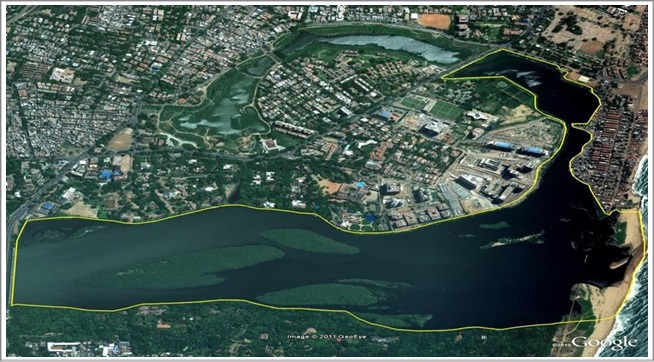
Adyar Estuary and Creek with Sand Bar at the Right. Photo: Google
Mouth of the Adyar river. Photo by Magentic Manifestations on 07 November 2015
Check and Bed Dams on the Adyar River
In addition to encroachments, silt and garbage, the Adyar has another man made problems. There are at least two check dams. The one at Nandambakkam can be seen on Google. The other at Manapakkam has been partially dismantled to form a low bed dam and is now under runway 12/30 of the international airport.
The reason given for the check dams is to recharge ground water. That is good only for drought years. In a flood year it aggravates floods. Check and bed dams slow the flow, thereby increasing flooding in flat areas. They also raise the river level and cause silt deposition.
The Nandambakkam check dam has aggravated floods in the military area and probably in the Coast Guard Air Station and the Spice Jet hangar. The bed dam under the secondary runway is one of the causes of flood in the airport.
Flooding at the International Airport
The international airport is vital to the economy of Chennai and neighborhood. Flooding of the airport was therefore a major calamity and top priority needs to be given to flood prevention.
Adyar river floods the Chennai International Airport.
Flooding at Chennai International Airport. Rescue by IAF Helicopter
Satellite image of Chennai airport showing runway over Adyar river.
In 2009 plans were finalized for extension of the secondary runway 12/30. This included a bridge over the Adyar river. This can be seen in the satellite image. As per agreement between the state governmentt and Airports Authority of India (AAI), several conditions were to be fulfilled by the AAI. AAI would deploy flood safety mechanism on either side of the proposed bridge to ensure free flow of flood water. After the construction of the bridge for the secondary runway and parallel taxiway across the river, AAI would take care of the periodic maintenance including the desilting work within its boundary. Otherwise it would remit the cost to the PWD for undertaking the annual maintenance works. AAI would provide adequate flood protection walls on either side of the river at places where the river was proposed to be covered for the project. The flood protection wall on the river’s left bank would be constructed along the river meandering portion for a minimum clear waterway of 130 metres. AAI would also construct retaining walls on either side of the river front, both upstream and downstream, to avoid inundation.
It was also agreed to convert the existing check-dam into a bed-dam with a height of 0.30 metres. The runway would go above this bed dam.
The PWD authorities would also have the right to enter into airport area to inspect the Adyar river at any time.
Examination of satellite imagery available on Google does not indicate whether the agreed flood protection measures have been undertaken. In any case, the agreement does not appear to cover the vital factor of the carrying capacity of the tunnel that would be formed by constructing the bridge. In the event, it proved grossly inadequate and the airport got flooded to a depth of seven feet.
The international airport can be protected only by adequate flood prevention measures in the Adyar river. The following are necessary :
-
Remove the sand bar at the mouth of the Adyar river and dredge it to the same depth as the river at that point. Periodic maintenance dredging will then be required to maintain the channel.
-
Desilt and deepen the Adyar along its entire length of 42 km.
-
Remove all check and bed dams on the river.
-
Desilt and deepen the Chembarambakkam reservoir. Surplusing of this reservoir was a major cause of flooding of the airport.
-
The airport crossing requires special attention. The river should be dredged and deepened, so as to give it adequate carrying capacity. Alternatively, a flood channel should be constructed to take part of the flow around the airport.
THE PALLIKARANAI MARSH
The Pallikaranai wetland is a freshwater swamp situated about 20 kilometres (12 mi) south of the city centre. Spread over 50 square kilometres (19 sq mi) at the time of Independence, about 90% of the wetland has been lost as the city expanded. Pallikaranai marshland is among the last few remaining natural wetlands of South India.
The Pallikaranai Marsh
It is surrounded by the expressway of Old Mahabalipuram Road and the residential areas of Perungudi, Siruseri, Pallikaranai, Madipakkam, Velachery and Taramani. It receives water from 31
different water bodies in a catchment of 235 square kilometres (91 sq mi) that includes the urban sprawls of Velachery, Pallikaranai and Navalur. The average elevation is 5 metres (16 ft) above mean sea level.
Pallikaranai always retains some storage, thus forming an aquatic ecosystem. The Ministry of Environment and Forests, has prioritised Pallikaranai as one of the most significant wetlands of the country. The marsh contains several rare or endangered and threatened species and acts as a forage and breeding ground for thousands of migratory birds from various places within and outside the country.
The marsh has been cut into two for a road with no free flow underneath. About 90% of the wetland was lost as the city expanded. The marsh has shrunk over the last four decades following the creation of residential areas around it, including Perungudi, Siruseri, Pallikaranai, Madipakkam, Taramani and Velachery.
Indiscriminate dumping of toxic solid waste along the road, discharge of sewage, and construction of buildings, railway stations and a new road to connect Old Mahabhalipuram Road and Pallavaram have shrunk the wetland to a great extent. In 2007, as an effort to protect the remaining wetland from shrinking further, the undeveloped areas in the region were notified as a reserve forest.
Another view of the Pallikaranai marshland. Photo: M. Karunakaran, The Hindu
Excess rainwater is drained through the Okkiyam maduvu into the South Buckingham Canal, which in turn discharges into the Kovalam estuary. The outlet has been choked by garbage and siltation. There is also a sand bar at the mouth of the Kovalam Creek. As a result, during the recent floods, the swamp swelled in size and flooded the surrounding residential areas.
Apart from removing the sand bar and de-silting the Okkiyam maduvu, the Buckingham Canal and the Kovalam estuary, it will be advisable to dig a flood channel directly east into the sea from the Buckingham Canal.
THE BUCKINGHAM CANAL
The Buckingham Canal is a 420 km long salt water navigation canal, running parallel to the Coromandel Coast from Vijayawada in Andhra Pradesh to Villupuram District in Tamil Nadu. The canal connects most of the natural backwaters along the coast to the port of Chennai (Madras). It was constructed by the British Raj, and was an important waterway during the late nineteenth and the twentieth century.
The canal runs approximately 1 km (0.62 mi) back from the coastline. The Cooum River connects the canal to the Bay of Bengal in the center of Chennai.
Canal shown in red
It is little used and no longer well maintained. Within the city of Chennai the canal is badly polluted from sewage and industrial effluents, and the silting up of the canal has left the water stagnant, creating an attractive habitat for malaria-spreading mosquitoes. The North Chennai Thermal Power Station (NCTP) discharges hot water and fly ash into the canal as well. In agricultural areas South of Chennai the former tow path along the scenic areas is used for light motorcycle and bicycle traffic. On January 1, 2001 the Government of India launched a project to prevent sewage outfalls into the canal and Chennai’s other waterways, and to dredge the canal to remove accumulated sediment and improve water flow.
Buckingham Canal in Chennai City. Pic by Ajay Khullar – taken from S Muthiah’s “Madras, the Gracious City”
Within the city limits of Chennai much of the canal has been used as the route of the elevated Chennai Mass Rapid Transit System (MRTS). MRTS stations such as Kotturpuram, Kasturba Nagar and Indira Nagar have encroached on the canal and narrowed the width of the canal to less than 50 meters in few places.
Buckingham Canal is the most polluted of the three major waterways in the city with nearly 60 per cent of the estimated 55 million litres of untreated sewage being let into it daily, including by Chennai Metropolitan Water Supply and Sewerage Board.
Buckingham Canal near Korukkupet, Chennai
Revival of Buckingham Canal has been proposed by declaring it part of National Waterway 4 (NW-4). The Government plans to allocate Rs 500 crores to de-silt the waterway, dredge it up to a depth of two metres and make it navigable once again by introducing barges for transportation of goods. This is not a new plan and time and again several such intentions have been aired only to be put back on the shelf. However, the government of Andhra Pradesh has shown great interest in the project and that may provide the necessary impetus.
The canal played a great role in mitigating the damage caused by the tsunami of 2004. A view has also been put forward that had the integrated water system linking the canal and other rivers/waterways across Chennai been kept alive, it would have spared Chennai the worst effects of the recent flood.
Once the Buckingham Canal is revived and made part of National Waterway 4, it will be able to spread flood water north and south. This will certainly moderate any flooding.
LAKES AND RESERVOIRS
Chennai and neighborhood often have drought. Hence, the residents have built hundreds of reservoirs which are used both for irrigation and drinking water. The largest of these is Chembarambakkam lake. The Kesavaram dam diverts water from the Cooum river into the Chembarambakkam Lake which supplies drinking water to the city of Chennai. Surplus from the lake flows into the Adyar river.
Chembarambakkam and other reservoirs have lost much of their storage capacity due to silting.
Chembarambakkam Lake
The graphic below shows the inflow and outflow from Chembarambakkam from 24 Nov to 02 Dec 2015. The first spell of rain in early November filled the reservoirs. There was a break in the rain and an alert was received on 25 Nov 15 about an impending spell of heavy rain. In tune with the rest of the population, there was complacency and water was not released to make way for the forecast inflow. The behavior is indicative of a “drought” frame of mind. On 01 and 02 Dec 15 there was heavy rain of 48 cm and the authorities felt compelled to release 29,000 cusecs for 12 hours. The swollen Adyar river rose further wreaking havoc all along its course.
Graphic from The Hindu of 10 Dec 2015
The story of Chembarambakkam was repeated with other reservoirs such as Poondi and Porur. Thanks to global warming, extreme weather conditions — both drought and floods — are happening more often. The way to cope is to de-silt and deepen the existing reservoirs. No additional land is required for this. Yet it will help to tide over drought and also mitigate floods.
RECOMMENDATIONS
-
A major effort is required to educate the public not to clog the drains with garbage.
-
Remove the sand bars across the Cooum and Adyar rivers and the Kovalam Creek. Dredging should continue to the same depth as the rivers at that point. Periodic maintenance dredging will then be required to maintain the channel.
-
Desilt and deepen all three rivers, the Buckingham Canal and the Covelong Creek along their entire length.
-
Remove all check and bed dams on the three rivers.
-
Desilt and deepen all the reservoirs, with the highest priority for Chembarambakkam.
-
The Adyar river airport crossing requires special attention. The river should be dredged and deepened, so as to give it adequate carrying capacity. Alternatively, a flood channel should be constructed to take part of the flow around the airport.
-
Dig a flood channel directly east into the sea from the Buckingham Canal to carry overflow from the Pallikaranai marsh.
Videos and Further Reading
1. MACRO DRAINAGE SYSTEM IN Chennai Metropolitan Area
http://www.cmdachennai.gov.in/Volume3_English_PDF/Vol3_Chapter10_MacroDrainage.pdf
2. Indian Express explanation of Chennai floods
https://www.youtube.com/watch?v=x4dNIfx6HVs
3. Chennai airport was doomed, its runway is built on river
https://www.youtube.com/watch?v=Ewzr8numQVM
4. Aerial view of flooded Chennai from IAF rescue chopper
https://www.youtube.com/watch?v=SB-86WHhjbg
5. Rescue of pregnant lady by Wg Cdr Simon & Sqn Ldr Venkat
https://www.youtube.com/watch?v=M4nh5gtHj2Q
6. Flood Prevention in the Vale of Kashmir
http://amolak.in/web/flood-prevention-in-the-vale-of-kashmir-by-joseph-thomas/#comments
7. Sequel to Flood Prevention in the Vale of Kashmir
http://amolak.in/web/sequel-to-flood-control-in-the-vale-of-kashmir-by-joseph-thomas/
8. How Buckingham canal could have saved Chennai


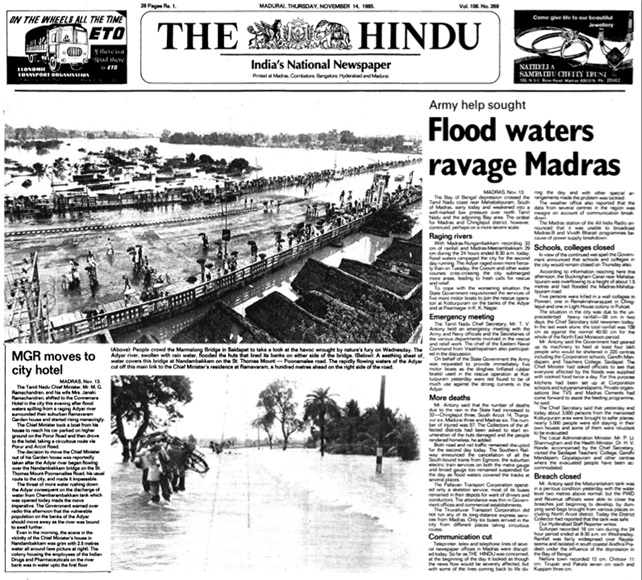
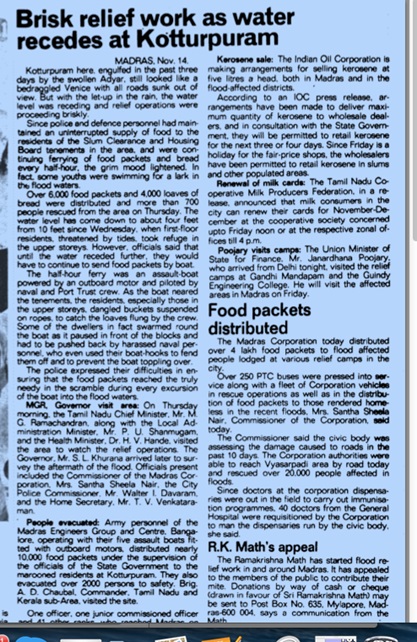




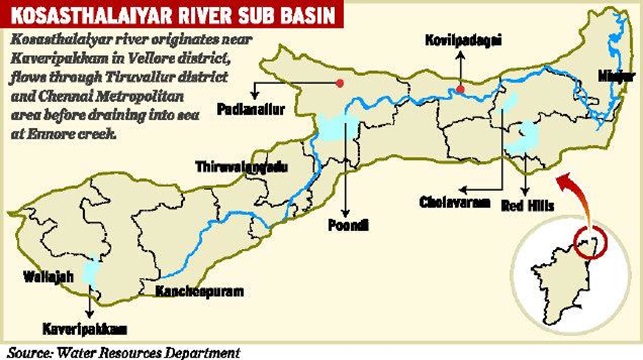
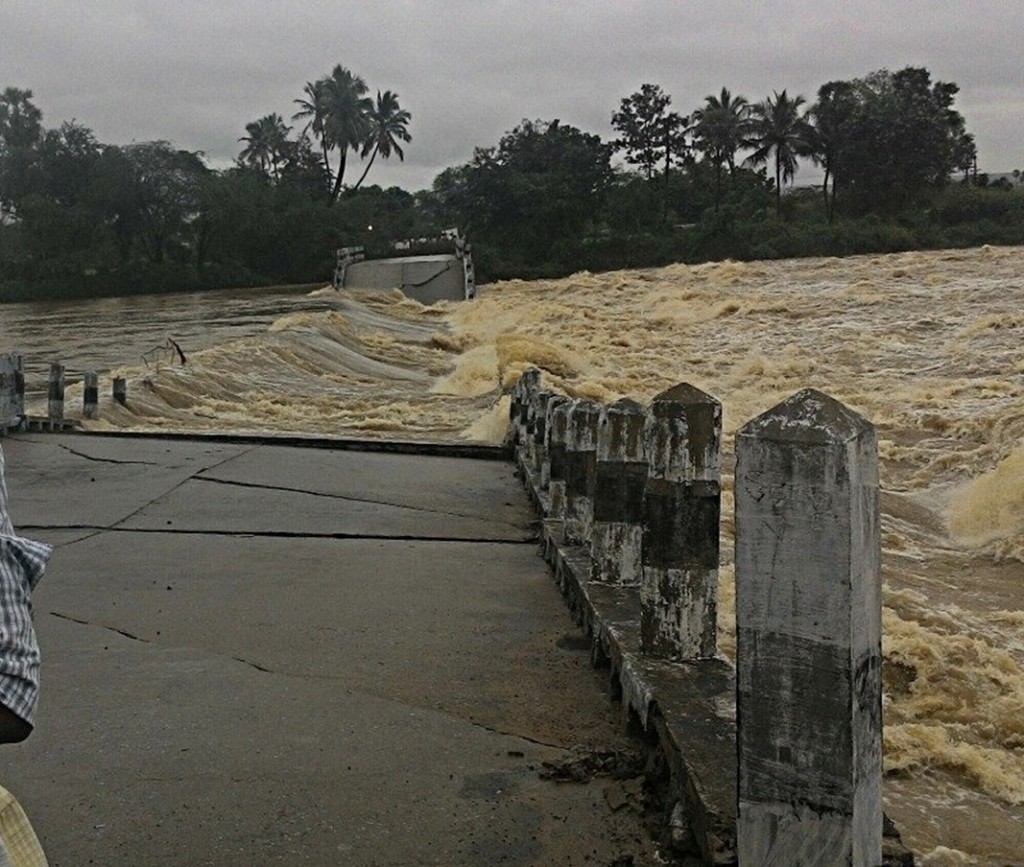
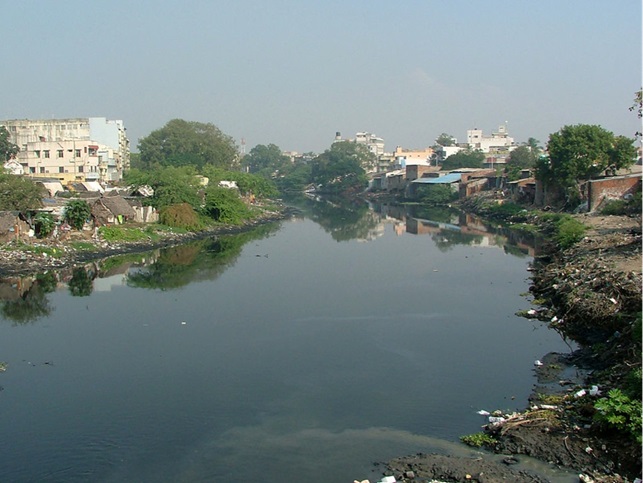
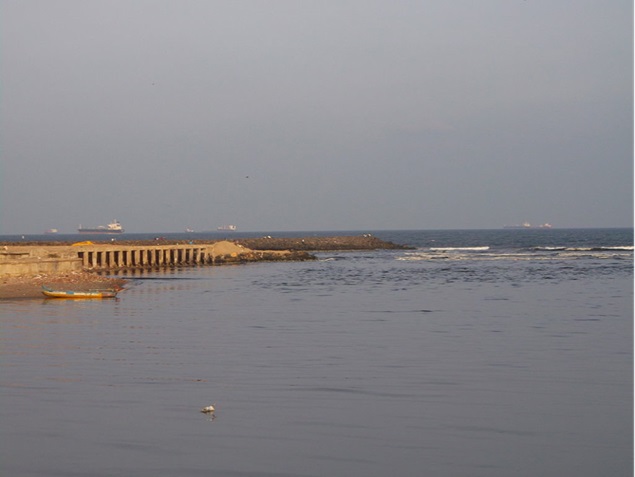
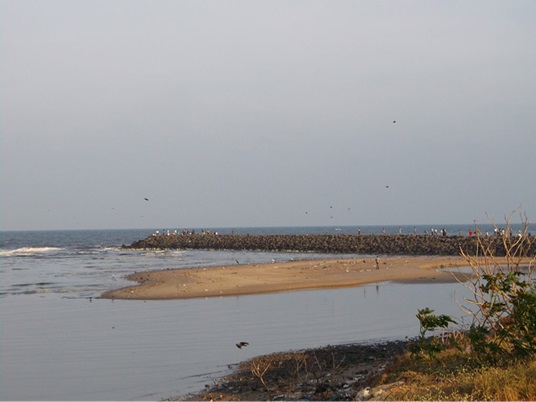

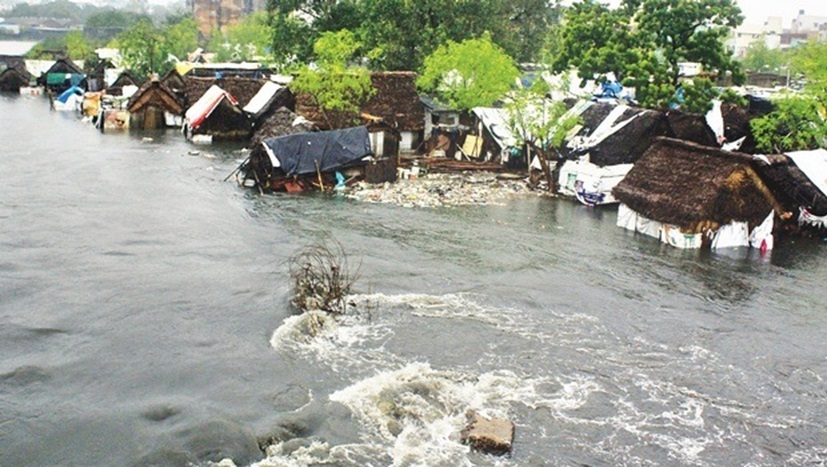
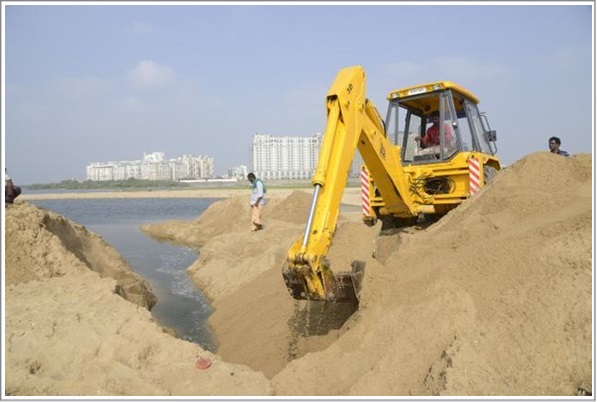
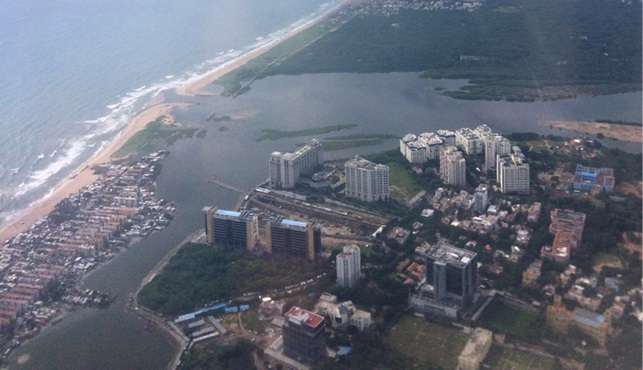

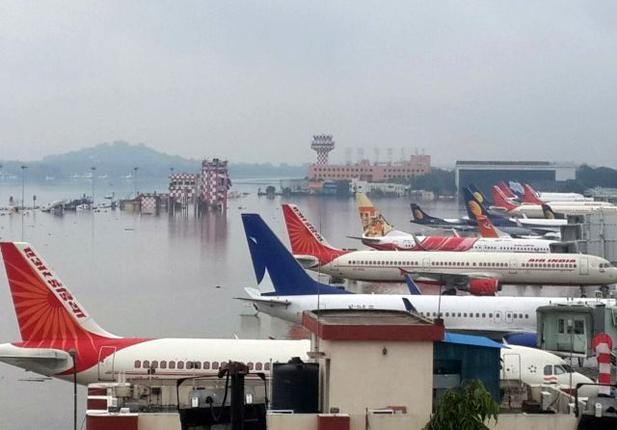


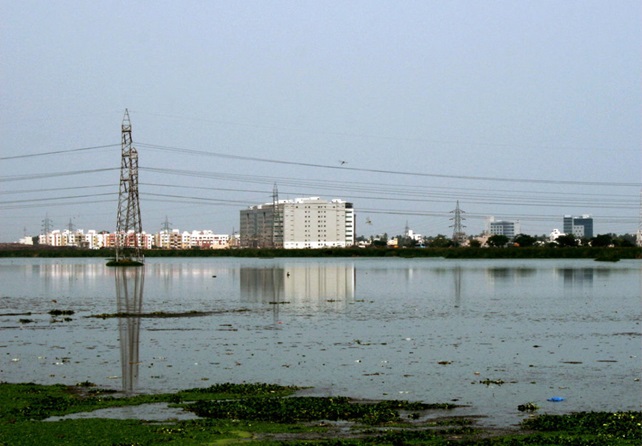



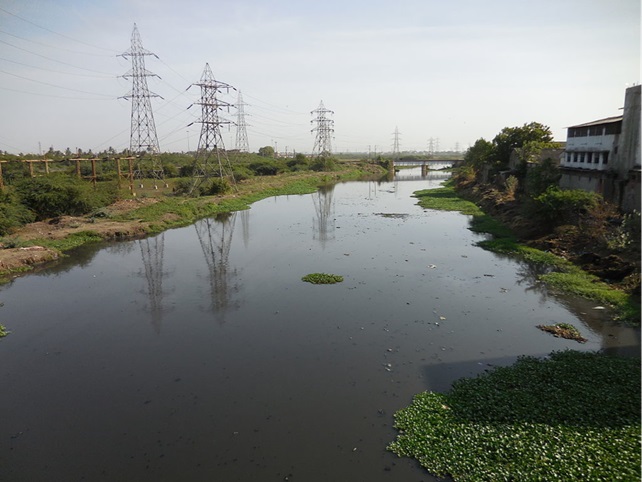

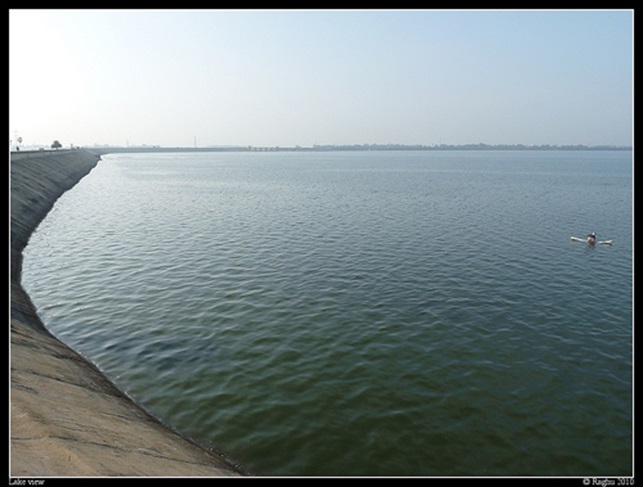
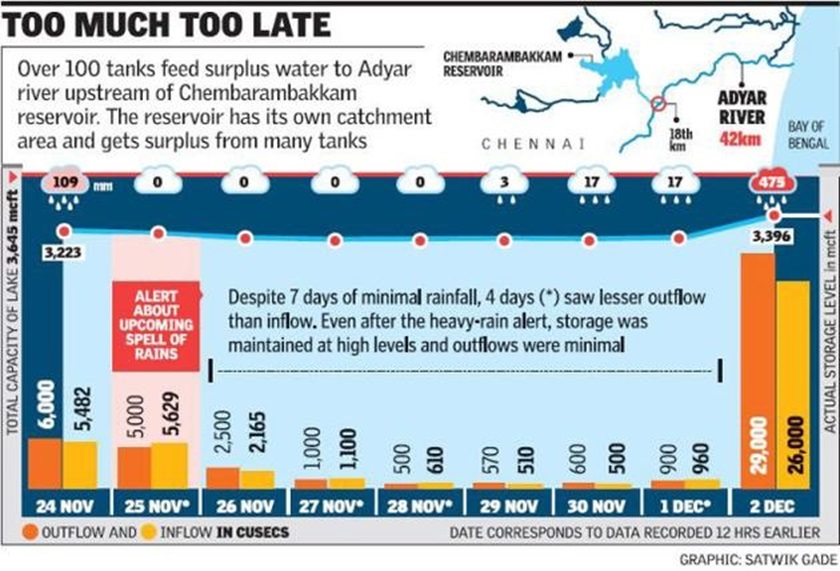






[...] http://amolak.in/web/the-chennai-floods-of-2015-history-repeats-itself-by-joseph-thomas/ [...]
I went through your article and I will go through the other one as well. It is a extremely well researched and thought provoking article, I hope the administrators of Chennai take the suggestions and act on it. I also hope politicians from one of the two parties in Tamilnadu make this an action point in their election manifesto. Then there is a chance for change in Chennai.
I am sure a lot of research has gone into it.
Glad to inform you that the government and people of Chennai have partially woken up and are taking action. Please see https://www.thehindubusinessline.com/specials/clean-tech/from-drought-stricken-to-water-capital-the-chennai-transformation/article29271457.ece?utm_campaign=socialflow&fbclid=IwAR3DPRUpo9q0GYrg-Vq2T9Z70xpZBaQ7AVvnwWyWDEBBAZXca1zl9OX0wM0
In the case of Chennai, desilting and cleaning of waterbodies will mitigate both drought and floods.
What is still missing is action to de-silt the four rivers in Chennai.
Dear Joseph sir,
Belated best wishes for a ‘Happy New Year’. Read your article with great interest. Please let me have your contact tel.no. would like to chat on the subject.
Best wishes to you and the family.
Thank you for the link. Most informative . Comprehensive and full of pointers to a possible set of simple steps that may mitigate the scale of devastation when the conditions repeat. But given that it is has happened so many times over it is difficult to see that happening.
Before the memory of this recedes some peoples approach to it may be the only way forward though pure altruism usually has very little chances of success. As a young boy working with my father in construction projects , i remember having visited in 1982 the Cooleroon river mouth along with him to inspect it before submitting our tender for the Flood Control work. After the study we were discouraged from submitting the tender since we were reliably informed that it was a conduit to channel funds out and that no real or meaningful work that had to be carried out . Moreover the payouts involved were huge. In short the contracts were only open to a select club of bandicoots.
I truly hope that your effort in putting this together will be of use to someone sometime to save lives in the future.
Thanks Mani. Agreed that pure altruism usually has very little chance of success. There is a huge opportunity for dredging companies here. If they pick up the idea and market it, the people will benefit.
Very comprehensive piece. I wrote a few stories analysing the Chennai floods for the Times of India and India Climate Dialogue. They can be read at http://gopi-warrier.blogspot.com
The crucial thing lacking in Chennai and other cities is public demand for flood control. Glad you have mentioned in your blog that “Everybody in Chennai …………….. has a responsibility to ensure that this does not happen again.”
Secondly, if the reservoirs are de-silted and deepened there will a solution both for drought and floods. Therefore, there is no need for the Telugu Ganga Canal or the expensive Reverse Osmosis Desalination plants. The government can actually save money.
My main theme is that public opinion is vital. There is no copyright on the article and you are welcome to reproduce part or whole of it.
While posted to FIS [on return from Iraq] I recall the catastrophic flooding of Adyar River in 1976. FIS had Kirans, Harwards and HT2s. The River was in spate. Apparently it was difficult to reach the societies by boat due to the fast flowing water. The affected societies surrounded by the flood waters were virtual islands.
Tambaram was requested to provid food to the stranded residents
The old faithful, the HT2, was pressed into service. Parathas rolls were prepared by the Airmens’ Mess and wrapped in news paper [under the wing breakfast we all are used to]. These packets were then carried by the rear seat occupant of the HT2s. I was flying the DD photographer who was in the rear seat of my aircraft. I flew as No 2 to one of the HT2s and we surveyed the scene before us. The DD rep was busy filming throughout the flight. A suitable colony was selected and a dry run made some feet above the terrace where the stranded residents had collected. Next followed was a test drop. The first packet missed the target. Having judged the release point thereafter all runs were successful. The DD rep was having a field day filming the drops.
Nothing seems to have been learnt since 1976!!!! and Adyar floods every NE monsoon…
Yes, nothing seems to have been learnt. As per K Lavanya “Catastrophic floods occurred in 1976, 1985, 1996, 1998, 2005, 2008 and 2010. ………………In short, Chennai is not starving for rain; it is starving for water.”
The problem is that the public has been apathetic. There has not been any demand for flood control. For eg the big reservoir at Chembarambakkam is reportedly silted to the extent of 40 %. Desilt this and other reservoirs and the twin problems of drought and floods will be mitigated, if not solved.
The floods of 2014 in Srinagar were worse. However, we have been able to make a dent and the public is now demanding that the Jhelum be de-silted and dredged.
Sand mining is another area that needs attention. Sand mining from rivers prevents, or at least mitigates, floods. Yet, it is often banned. Now better sense seems to have prevailed and it is encouraging to see a recent report where the National Highways Authority of India will mine sand from the Yamuna and other river beds and provide it for road construction.
The problem is not only public apathetic but lack of foresight, motivation, or passion of the administration to get a job done right first time at all times. Any management or engineering student learns about correction, corrective action, and preventive action.
The first, ‘correction’ is a patch up job to correct something that has been observed to be defective or not conforming to standard;
The second ‘corrective action’ is action taken to ensure that the observed defect or non-conformity does not occur again; and the last
‘Preventive action’ is a deeper analysis of a possible non-conformity that has not occurred but could to occur, the occurrence of which will have a major effect on the proper functioning of a given system or machine. I think we are stuck at the first stage.
There has not been any demand for flood control. If the big reservoir at Chembarambakkam is reportedly silted to the extent of 40 % any Dr Watson would have said the de-silting is the answer to recover storage capacity of the lake. Sand mined from the river would be used elsewhere and also increase the flow and delay of the river spreading sideways. Preventing dikes can channelize and control the river. But then I am talking of preventive action.
Thanks CN. Yes, we are stuck at the first stage.
And yes, the government itself says that the reservoirs are silted up. But, instead of de-silting the reservoirs, they went in for the grandiose Telugu Ganga project. The scheme consists of a 408 km long canal from Srisailam Reservoir to Andhra Pradesh – Tamilnadu border and further extends 26 km in Tamilnadu till it joins the Poondi reservoir. Canals were then built to further take the water to the Red Hills and Chembarambakkam reservoirs.
http://www.deccanchronicle.com/150630/nation-current-affairs/article/yettinahole-could-meet-fate-telugu-ganga-project-experts
“Scientists attached to Indian Institute of Science (IISc), Bengaluru equate the state government’s proposed Yettinahole Drinking Water Project with the unsuccessful Telugu-Ganga Project executed from 1997 to 2006 which was aimed at supplying water to Chennai besides irrigating drought-prone areas of Chittoor from rivers Krishna and Pennar.
……………snip…………
“A report ‘Environmental Flow in Yettinahole,’ by IISc scientists T.V. Ramachandra, Vinay S. and Bharath Atihal pointed out that Telugu Ganga Project also known as Krishna Water Supply Project was to provide 15 TMC of water to Chennai which was later revised to 12 TMC but the project failed to meet its objective.
“The Telugu Ganga project, IISc scientists say, was meant to utilise water from rivers Krishna and Pennar by diverting water from Srisailam reservoir in Andhra Pradesh to Poondi reservoir in Tamil Nadu covering a distance of 406 km through a series of interlinked canals and reservoir. It was also meant to irrigate 2,32,702 hectares of drought prone areas of Kurnool, Chittoor and Cuddapah districts.
“As per the records on water supply to Chennai city, IISc scientists have noted that the project failed to meet drinking water requirements of the residents of Chennai and records show that Chennai received inadequate water from the project except in 2,000 when the metropolitan city received the maximum of 5 TMC of water.”
Similarly, instead of de-silting and deepening the existing reservoirs, the state and central governments have gone in for expensive de-salination plants. Two have already been built and a third plant costing Rs 1372 crores has been cleared. See for eg http://timesofindia.indiatimes.com/city/chennai/Chennais-third-desal-plant-to-come-up-on-ECR-for-1370-crore/articleshow/46560126.cms
All the reservoirs can be de-silted and deepened for less cost than this. While a desalination plant will do nothing for flood prevention, de-silting the reservoirs will mitigate both drought and floods.
Money is not the problem. The propensity to go in for grandiose projects is.
Agreed. Never join the IAS or be a scientist or a true professional. You will then have to answer to a nitwit 9th standard elected leader who does not understand what you will say but be concerned only of the ROI on his investment.
Don’t give up so fast. Public opinion is what matters. All you have to do to help is to forward the article with your comments to your circle of friends and relatives.
De-silting of reservoirs is very important, especially for the older ones like Khadakvasla. See for eg
http://www.dnaindia.com/pune/report-silt-deposits-reduce-water-holding-capacity-of-khadakwasla-dam-in-pune-to-half-experts-blame-deforestration-2093529
“Khadakwasla which had 4 TMC storage capacity and supplied water to 80,000 Punekars when it was constructed, is now left with 2 TMC water storage capacity for a population that has grown by leaps and bounds.”
“Colonel (Retired) Suresh Patil said that he with his NGO Green Thumbs have been working on desilting of Khadakwasla since 2012 with the help of few corporates and other socially aware groups. Although over 1 lakh truck loads of silt has been removed from the dam, a lot still remains to be done.”
If we don’t de-silt the reservoirs, the Irrigation & Flood Control (I&FC) departments will construct more dams and reservoirs. Most of the land forcibly acquired in India is for irrigation. To the extent that farming land is taken away, food production is reduced. The government has an insatiable demand for land.
Dear Gen Sir,
I am attaching some aspects of how it was managed.Are bureaucrats ever accountable?
Regards.
BKM
Sent from my iPad
Begin forwarded message:
Subject: Fwd: Chennai Floods
Who did what during the Chennai floods!!
As the situation turned critical in Chennai due to unprecedented floods, our brilliant administrators from the IAS got down to deciding as to how the problem was to be managed.
After great deliberation over many days and several meetings they arrived at an outstanding decision….Call the Armed Forces.
Then they set the process in motion with tremendous efficiency. The state Chief Secretary sent a note to Union Home Secretary, who forwarded it to PMO, who sanctioned it and sent to Defence Secretary who finally gave written permission to the Service Chiefs.
IMAGINE THE BRILLIANCE REQUIRED FOR ALL THIS!!!
And the Armed Forces….they simply went in as ORDERED…… wet their boots a bit … saved a pregnant mother and her unborn child in a daring Helicopter rescue and saved the situation as was expected of them
WHAT THE ARMED FORCES DID WAS NO WORK, IT IS ONLY DUTY TOWARDS THE NATION. FURTHER, IT REQUIRED NO BRAINS.
THE REAL WORK WAS DONE BY THE BRILLIANT ADMINISTRATORS, THE MIGHTY IAS, WHO TOOK THE CRUCIAL DECISION TO CALL THE ARMED FORCES AND THAT TOO IN JUST FIVE DAYS TIME!! AND THEN PROCESSED THE DEMAND MOST EFFICIENTLY THROUGH THEIR SELF CREATED LABYRINTH OF OFFICIALDOM
SO WAS THE WORK OF THE IAS VERY TAXING? OF COURSE!!AFTER ALL, IT TAKES BRAINS TO UNDERSTAND AND PUSH THROUGH THE MAZE OF SANCTIONS AND APPROVALS.
As the rescue operations progressed, the PR departments of the Armed Forces sent out press releases of efforts put, they wanted the nation to know how their armed Forces respond.
BUT THE MEDIA WAS NO LONGER INTERESTED!! IT HAD OTHER MORE IMPORTANT SUBJECTS TO COVER LIKE THE POLITICAL CONSEQUENCES OF THE TRAGEDY… HOW LONG DID RAHUL STAY AT CNHENNAI… WHAT DID HE SAY…. HAS JAYALALITHAS’ IMAGE BEEN RUPTURED ETC.
A good Indian citizen then asked of the IAS officer and the politician, “The Armed Forces are so dedicated towards the Nation, they stand by the people in all times of calamity, so why do we have them sitting at Jantar Mantar asking the Nation to acknowledge their service”
Pat came the reply, “The Armed Forces, in helping the people, areonly doing their job. We decided that they should help the people and they did.” And they added, “Agreed!! The Indian Armed Forces work very hard and with dedication. WE SALUTE THEM. Is that not what they want all the time… SALUTES. So we salute them today as we saluted them on Republic Day and Independence Day and Army Day and all other days when they call upon us to salute them. IS THAT NOT ENOUGH FOR THEM?”
Interestingly, nobody has tried to question out brilliant administrators as to why the floods happened in the first case. Nobody has tried to find out as to why the Chief Secretary did not approve opening the sluice gates when the waters were still rising. Nobody has found out why planning was not done to ensure that such man (IAS) made calamities do not take place.
Sir,
The article is primarily meant to prevent, or at least mitigate, future floods.
Political leaders sense public opinion and then try to be one step ahead. Don’t expect any real initiatives from them. There have been frequent floods and yet there has been no public demand for flood control measures. Therefore, floods in Chennai are due to public apathy and complacency.
We have been able to make a dent in public apathy and complacence in Kashmir. With your help, we hope to do the same in Chennai.
Dear Mohanti,
You have asked whether this Thomas was in NDA in 1960 and in the DSSC in 1981.
Yes. He was SCC Hunter Sqn, XIX Course.
And he was in the DSSC, and that is where he hung up his uniform.
Ring him up on 080 25950533. I assure you that the conversation will invigorate you. Thomas has done a very detailed bit of research and I think that the article needs to be taken seriously by the people in power.
Surjit
Dear Surjit,
As far as flood control is concerned, when I first wrote about de-silting & dredging the Yamuna in 1988, my friends took me to a member of the Central Water Commission. I answered all his questions and convinced him. The Delhi Irrigation & Flood Control Dept was earlier convinced.
Even for the articles in 2014 & 2015 on the Kashmir floods, I have answered every query.
The concept is so simple and obvious that I have never claimed any intellectual property for it. I feel more like the little boy who found that the emperor was in his birthday suit.
The article is very good and will be appreciated by colleagues from SERVICES, however it started a thought process that I would like to share: -
What I wondered is why ‘Indian Public’ [the teeming majority of suffering consumers (?)] does nothing… about the irresponsible (Politicians, Advisory and Executives) who fail / failed (since India became a socialistic republic) in their duty (or assigned responsibility) and camaraderie (to fellow country men). A few do come out with ‘a posteriori’ wisdom (corrective action after ‘milk has been spilled’?) Some speak of dire need to ‘educate masses ’ (does populace wish to learn?), may be to satisfy individual ego status [superiority complex(?) to my mind], rather than a well contemplated preventive measure or to persuade public’… follow and / or force ‘the right course of action’!
[May be the (intelligent / experienced) veterans (neither ‘Greedy’ nor ‘Suckers stepping on poor men’s stomach to ‘satisfy’ their personal needs’ ); are sensible elders to whom workable solutions ‘accrue’ as a result of consultation/s among expert equals(?) and as such are able of solving futuristic problem/s (with feasible solution/s … ‘The whites’ converted to ‘Reds’ after thrashing them thread –bare…to use Services parlance)
Note: – I could be wonky but would any one believe the logical remedies that struck the (distant and disassociated) thinkers, never came ‘in proximity’ of those supposed to be dealing with the problem day in /day out?
Dear Moru,
It is easy to be cynical and I admit that I’m often cynical myself. However, sometimes we can make a difference.
See Flood Prevention in the Vale of Kashmir
http://amolak.in/web/flood-prevention-in-the-vale-of-kashmir-by-joseph-thomas/#comments
and Sequel to Flood Prevention in the Vale of Kashmir
http://amolak.in/web/sequel-to-flood-control-in-the-vale-of-kashmir-by-joseph-thomas/
You will see that we have been able to make a difference.
Also please see http://www.thebetterindia.com for examples of how common citizens can make a difference.
Happy New Year and best regards,
Hi Joseph,
enjoyed reading your article on the Chennai floods having been in the thick of it. Fortunately in one of the less affected areas. Though I live on the Cooum bank we were lucky that it breached on the opposite bank sparing us.
probably the main reason after those you have ennumerated is that of venality and corrup[tion allowing unrestrained construction on the various lake beds ( Eris in Tamil eg Velachery) T nagar on the reclaimed Long Tank etc. and around the rivers and the marshland. Naturally in the years of heavy rain all these areas are going to flood as there is no alternative draiage for the excess water.
secondly the decision to release water from the rapidly rising lakes was taken too late and too large a quantity of water was released on the night of the 23 nov without adequate warning downstream .
Unfortunately human memory is short ( as your para regarding the years of flood shows) and in the dry years all sorts of building abuses are permitted.
all the best
Thanks Salim.
Political leaders sense public opinion and then try to be one step ahead. Don’t expect any real initiatives from them. There have been frequent floods and yet there has been no public demand for flood control measures. Therefore, floods in Chennai are due to public apathy and complacency.
Chennai considers itself a drought prone city. Witness the Telugu Ganga project that brings water from the Krishna river and the reverse osmosis water desalination plants. Both are popular grandiose projects. Yet, for a fraction of the cost, it will be possible to de-silt and deepen the rivers and the reservoirs (Eris). This would solve both drought and flooding problems.
It is common to blame construction on lake beds and marshland for the flooding problem. I have deliberately refrained from repeating this. It is quite possible to construct on lake beds and marshland, provided adequate drainage is catered for. Whether such construction is desirable or not is a different matter. Mexico City (Pop 9 million) is built on a swamp and yet they manage. See for eg
https://en.wikipedia.org/wiki/Water_management_in_Greater_Mexico_City
Agreed that venality and corruption probably are factors. However, in “Guftagu” our policy is to assume that everybody is honest, unless proved otherwise. Secondly, many alleged venal people suffered poetic justice when their houses got flooded. To give just one example, the allegedly venal people who bought land from allegedly venal panchayat members in Rajakilpakkam, next to the air force housing area in Madambakkam, Tambaram were meted severe summary punishment. When the Rajakilpakkam “Eri” flooded their houses, these people allegedly hired JCBs and demolished several sections of the earthen dam. The farmers, who suddenly saw their water supply gone, were furious and complained to the government. The response was prompt and drastic. A demolition team with police protection moved in and razed the houses. In an action reminiscent of the Roman conquest of Carthage, they quickly carted away the rubble, leaving little or no trace of the houses.
If the Rajakilpakkam incident has been repeated elsewhere, there is going to be a flood of court cases.
2. I have referred to release of water from the reservoirs. Thanks to an authoritarian government, the officials do not exercise their own judgement. This is all the more reason why we, the public, have to be vigilant.
Thank you for the article that you have written.
You have taken pains to research the subject thoroughly
and have studied the issues from several relevant perspectives.
The illustrations are detailed and informative.
It would be wise for people in authority to take note of
and act on your observations and recommendations.
I have forwarded the article to my cousin Preetha and her
husband Anand in Chennai.
An extremely well-researched article. I hope someone in government takes up your suggestions in earnest.
An excellent article- an eye opener.Do hope that the TN govt does something- Col SREE.
That’s a lot of work ! Well done !
Thank you Gen Singh.
Wish you a very healthy and prosperous xxivi
Ramesh Verma
Respected General,
We are unable to maintain water courses in a condition to allow smooth flow of rainwater. Garbage in various forms is thrown all over. Polythene & growth of wild grass poses difficulties in clearing the passage. Sewage in various forms including human excreta flows into natural drainages besides industrial waste. Channels for flow of rainwater under runways need to be maintained at all times & should have extra carrying capacity.
Town planners need to lay special emphasis on smooth flow of rain water & should make use of Survey of India maps & collect data relating to rain water.
In Babina Cantonment all barracks constructed during British time were at higher points. The new constructions at lower levels block flow of rainwater. I feel due diligence is required before any construction comes up. Roads donot cross water courses at right angles.
The N Choe also known as Attawa Choe carries Chandigarh sewage & emits unbearable stench. Lt Cdr MLSharma of Jalvayu Vihar sector 67 Mohali has been fighting with Chandigarh Administration and Punjab Govt to stop discharge of sewage into this Choe. He identified no of discharge points & succeeded in stopping the flow. New sewerage lines & flow channels & boosters were constructed. A lot still remains to be done. Failures of discharge pumps & leakages is common & Commander Sharma gets after these officials for rectification. Punjab Govt last year sanctioned a separate pipeline to carry waste water through the N Choe flowing through Mohali township. One third of it from rear of NIPER to sector 67/80 dividing road has already been laid. That was the only way to contain stench from N Choe . We can well appreciate how things happen on the ground. We are proud of City Beautiful which is a well planned city with free flow of funds. I pray that our countrymen perform their duty to the Nation diligently.
Sincere Regards,
Col Bhangu
Thank you Sir.
regards
Harikumar
Well researched and concise .
Hope that the educated folks in Chennai will take an interest and help drive a movement to get the government to take action to dredge rivers and lakes.
Communities need to come together and help keep their stretch of rivers clean, communities can bring pressure on local factories to stop polluting rivers etc.
” Evil thrives because good people do nothing.”
So may all the good people of Chennai and Tamil Nadu join together and make their environment a better place for all around them.
Congrats Josecha!. I wish your suggestions are implemented to avoid another disaster. Really appreciate your patience in doing indepth study.
Regards.
From a friend :
“Thank you. I had read your earlier article on the flooding in Srinagar and found it an eye opener. The article on Chennai flooding 2015 was equally informative. I only hope the concerned authorities take note to prevent a repeat.”
Thanks. We have found that public opinion is very important. In Srinagar, the authorities were fixated on grandiose schemes to build a second flood channel and to get 100 % funds from the Centre. We persisted with our efforts, writing in Facebook and Letters to the Editor of “Greater Kashmir” and others. With the internet, we can put a marker on topics of interest and we get links to all articles. Our efforts have paid off and now the official view is to go in for dredging. See Sequel to Flood Prevention in the Vale of Kashmir
http://amolak.in/web/sequel-to-flood-control-in-the-vale-of-kashmir-by-joseph-thomas/
The first time I wrote about this was after the floods in Delhi in 1987. It had very limited effect, though the Flood Control Dept of Delhi was convinced and have implemented it, albiet in a very small way. Now the internet has changed everything.
JT read it hurriedly as I am busy packing.
Superbly documented history and great write up. It is much like in Mumbai where reclamation in some parts was done badly but the builders and the Corporation went beserk blocking access to water (Bangalore!!!)
All the best.
Thanks Tommy Sir,
Haven’t had the time to read the article but the forward by the editor & the pics enclosed are impressive & indicate that a detailed research & possibly apt solutions to the crisis are contained in the painstaking article.
Great going ! regards,
Sir,
A very detailed analysis of what was the original state, how we have allowed it to degrade and we all know how we paid for it. The measures to prevent this from repeating in future is also clearly laid out. Is it possible for you to send this to The Hindu Open Page? I am sure it will will reach the right eyes then.
It is a very informative article. My parents stay in Besant Nagar. One of my sister had a tough time in Indra Nagar. My other sister also had a tough time, she stays in Karpagam Gardens (close to Adayar river). I can understand how things went wrong from this article.
regards
srinivasan
Thanks Srini. I first went to Tambaram, Chennai as a young boy in 1947. Our family lived for many years at Tambaram where my Dad served in the air force. Even now, we have many relatives and friends in Chennai. So this is equally personal for me.
Glad that your family is safe.
In the past I have written to The Hindu on the India China Border. That was after they published an article with many factual errors. They kept sitting on it — neither posting it or rejecting it. They did not care to reply to me either. We therefore published it in this blog. You can read it at http://amolak.in/web/sino-indian-border-the-way-forward-by-j-thomas/
Glad to inform you that we get more reader responses on this blog than most newspapers get in Letters to the Editor. Reader responses are the oxygen that keeps us going.
You can also see that we are approaching a million hits.
Times have changed. The electronic medium is overtaking the print medium.
We wrote earlier about floods in Kashmir. It has changed the thinking. See http://amolak.in/web/flood-prevention-in-the-vale-of-kashmir-by-joseph-thomas/ and http://amolak.in/web/sequel-to-flood-control-in-the-vale-of-kashmir-by-joseph-thomas/
All this said, you are welcome to forward this article to The Hindu or anybody else. This article is a public service and there is no copyright on it. Any newspaper or magazine is free to repeat it, preferably with due acknowledgement.
My hearty compliments on a superb piece of work ! It is classic JT all the way. Any reader would get an accurate idea of what all went wrong. The pictures/drawings put in by you drive home your points with remarkable force. Hope someone somewhere in the powers that be takes note of the analysis and the recommendations.
Keep writing.!
MVK,
In a democracy power resides with the people. The people are the “powers that be.”
This was proven yet again re the Kashmir floods.
See http://amolak.in/web/sequel-to-flood-control-in-the-vale-of-kashmir-by-joseph-thomas/#comment-99620
Thanks for the kind comments.
Welldone Thomas. Yes, keeping Chennai city drains clean and free of waste/plastics is very important. Also desilting the rivers and waterways leading to the sea need to be taken up as this is a big job. The blockage of the sandbed at the mouth of the Adyar River is really very bad. Similar will be case of other waterways and the canals. Yes, the 430 km canal built by the British Raaj is now disused. It is a very big project and should be modified and used.
The next test of the Chennai preparations would probably be in Oct/Nov 2016.
I hope it goes well.
Well researched and written.
Your article is readable and makes eminent sense. The solutions to Floods in Chennai (Srinagar and elsewhere) are to be found within, provided we have the courage to take some tough decisions and ensure basic rules of infrastructure and environment protection are not seriously violated.
Well done Joseph as a truly concerned citizen who acts on his beliefs.
A very practical and yet comprehensive outline of what needs to be done. No grandiose schemes but considerable grass root level work. Will try and spread the message as unless enough concerned citizens build up pressure nothing significant will be done. Instead grandiose schemes will be planned eating up public money with no resulting benefit. It does not require a genius to implement simple issues like desilting the river mouth, desilting major reservoirs,preserving what little is left of disappearing water bodies! Also, awareness and education on what happens when we clog storm water drains with rubbish, garbage & debris.Both govt. accountability as also residents’ own mindset has to change.Thank you Wing Commander.
Thank you sir. Governments are fond of grandiose schemes and neglect the simple stuff.
One tentative conclusion after doing this study is that the Telugu Ganga scheme which brings water from the Krishna river to Chennai is unnecessary. Desilting the 100s of reservoirs in and around Chennai would be sufficient to provide drinking water to Chennai. As Mr Lavanya has said “Chennai is not starving for rain; it is starving for water.”
Thank you very much Joseph for a detailed study and explanation. Always looking forward to such reports to keep my mind active and involved.
Wishing you and family a prosperous New Year.
Hello Sir,
Beautifully laid out descriptive article and solution for the inefficient Chennai authorities. Hope they follow and carry out measures to prevent any future disasters.
Hope you had a lovely Christmas. Me and my family heartily wish you a Merry Christmas and Wonderful New Year 2016!!
Thanks Sathya. The authorities will take action when — and only when — the public demands it. Hence, public opinion is crucial. In the past, the citizens of Chennai did not do much towards flood prevention. However, the recent floods have been a wake up call. It is encouraging to see some citizens coming together to take measures to prevent future floods.
Sir. Excellently written covering a lot of information in great depth. If only some one in authority takes action !!
Thanks and congrats.
Regards.
Rajan
Thanks Rajan. The authorities will take action when — and only when — the public demands it.
Last year we had posted an article about floods in Srinagar. Please see:
Flood Prevention in the Vale of Kashmir
http://amolak.in/web/flood-prevention-in-the-vale-of-kashmir-by-joseph-thomas/#comments
In a democracy public opinion is most important. In J & K the entire discourse on flood prevention was about a grandiose plan to build a new flood channel. Apart from being frightfully expensive, it would have required land acquisition and construction of new bridges across the new flood channel. Even then, all that it would do is divert the flood from the city to the rural area. We had to mount a sustained campaign and get the public to understand the value of de-silting the river. I’m glad to say that our efforts proved successful. The public discourse now is about delay in dredging. Please see :
Sequel to Flood Prevention in the Vale of Kashmir
http://amolak.in/web/sequel-to-flood-control-in-the-vale-of-kashmir-by-joseph-thomas/
In the past, the citizens of Chennai did not do much towards flood prevention. However, the recent floods have been a wake up call. It is encouraging to see some citizens coming together to take measures to prevent future floods. This article is our contribution towards flood prevention in Chennai.